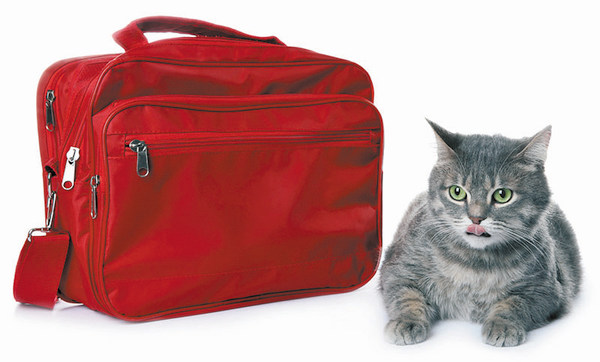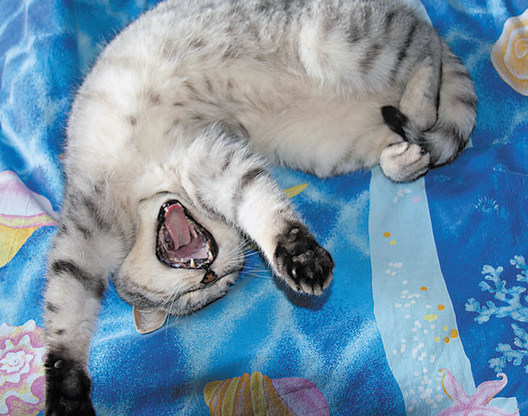By Kay Luckett

Ah! Spring has sprung. The trees grow fruit and the flowers bloom, but before you pick and prune, BEWARE! If you want to bring home that pretty bouquet or that blooming potted plant, remember this: kitty may decide to munch and lunch, and while many plants are okay for chewing, some are dangerous while others are very deadly.
Symptoms may include excessive drooling, coughing, vomiting, difficulty swallowing, and some plants, such as with the most poisonous plant—the lily—even a tiny bite ingested can cause serious illness. In fact, a small bite out of a lily plant can cause death within minutes or hours. See the list below for ideas, and keep the pet emergency-room poison control number on your fridge.
Toxic: lillies, pothos, aloes, philodendron, monstera, rubber plant, jade plant, dumb cane, snake plant and even that cute little lucky bamboo plant on sale everywhere. I bring my list with me whenever I go out to be prepared.
Safe: spider plants, money tree, ponytail palm, Boston fern, prayer plant, baby tears, parlor palms, areca palms among others. Cats often munch on these and love to burp them up as they like greens for their health. My cat particularly loves to nibble on our spider, ponytail palm, and Boston ferns. Home-grown herbs, along with catnip, are generally safe for cats to eat.
Another hot topic for Spring with our windy days is evacuation. For pet owners, now is the time to be getting an evacuation plan ready when it is unneeded. Our babies are totally dependent upon us, so we want to be ready in case certain circumstances require us to take kitty away from their safe haven.
One of the basics for every cat is to be sure kitty is chipped but also has a tagged collar. Even when a cat is chipped there is still no guarantee that during a panic someone would actually have time to find you, as the chip requires a phone call.
The collar should be kept with the cat carrier and ready to be placed on kitty before leaving home. This gives any rescuer a visible and immediate way to contact you should the need arise.
Prepare an emergency kit with a handle or in a backpack for quick escape in case a kitty carrier is in your other hand. Instant cat carriers can also include pillow cases or laundry baskets. Emergency kits should contain much of the following depending upon your needs:
- Canned and dry cat foods (6 cans wet; 4 lbs. of dry unopened)
- Can opener (in case flip-tops fail)
- 2 each of water and food bowls (pl astic or disposable)
- 6-pack of bottled water (just for the cat)
- Portable litter box
- 1 bag of litter with a scoop
- Plastic litter bags for car
- A blanket and/or bed
- Treats and catnip
- Favorite toys
- All cat medications as needed
I keep duplicate cat medications, so one is ready to grab. Many of the non-perishable items can be permanently stored in the car.

Research nearby cat shelters or hotels, have a backup person to help if needed, and have photos of kitty posted in your home and with your emergency kit. Search the internet for any other ideas so that you will feel safe and secure. Keep your cat carrier out so kitty can be familiar with it just in case. A ready and accessible carrier with a blanket, catnip, and a treat or two is suggested.
Other items should be purchased ahead of time and assembled appropriately in car and home: a pet first-aid kit (or make your own); post sticky rescue-stickers in your home and car that indicate an animal is present; have flashlights, extra batteries, wet wipes, and disinfectant spray….
The list goes on, so take only what is reasonable and practicable for you.
Most importantly, trust that you’ve done all you can to keep yourself and your pet safe. Remember how sensitive our furry friends are to our moods, trust the process, enjoy each day, and take a breath. Just breathe, knowing that right now all is well.
Now let’s talk about a cat’s ever-changing whims when it comes to feline cuisine. Who can predict what kitty wants today? If you’re lucky, it’s a given. But for my sweet cat the answer seems to be a moving target. Does this depend upon mood? Sometimes it is just a guess, so serving healthy foods is the key.
Keep a variety of canned and dry foods along with healthy treats on yourself depending upon their individual tastes. Dry foods have many varieties and best to keep the ones with healthy proteins and without fillers. Beware of carrageenan which has been linked to potential side effects in both animals and humans.
It’s important to pay attention to the stages of growth from kitten to senior as their needs change over the years. Remembering that senior cats have lower metabolism than kittens is a good place to start.
When purchasing foods, look for those made specifically for your cat’s age group, size, and breed. Some vets recommend a certain amount of calories for every pound of body weight so please investigate.
How much and how often to feed kitty is the traditional question for almost all cat owners.

My cat Shadow is only 6 lbs., and at 13 years old she basically tells me when she wants to eat. I put out a small amount and if she wants more, I’m here to serve with a smile. Having dry kibble out for on-demand feeding is discouraged as it can lead to over-eating and weight gain.
I give my cat a small amount of dry food when she wakes up and then later she gets her wet meals (two or three). Smaller meals are better, just as with humans. Adding a small amount of warm water to wet foods makes the meal easier to eat and keeps the food moist and edible.
The internet is a good source for info regarding what and how to feed a cat. It’s suggested that some wet and some dry each day gives a balance and too much kibble (even grain-free) is not as healthy as wet from either cans or home-made. Be sure to search the news for any recalls of commercial cat foods, and be sure that your cat food is safe.
These Springtime tips will save you time and stress and help you to give your sweet kitties the best care ever. The trick is to stay current with all the info out there about their care, as they are family.
More tips and maybe some tricks for each of the different seasons are coming up, so stay-tuned. In the meantime, keep your babies petted and purring.
Meow.

